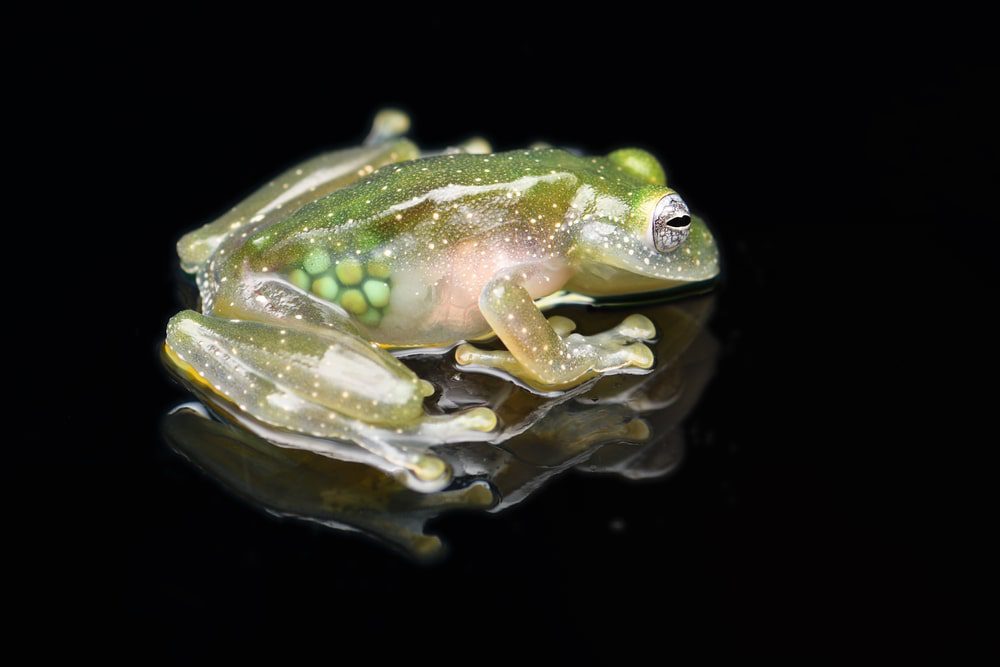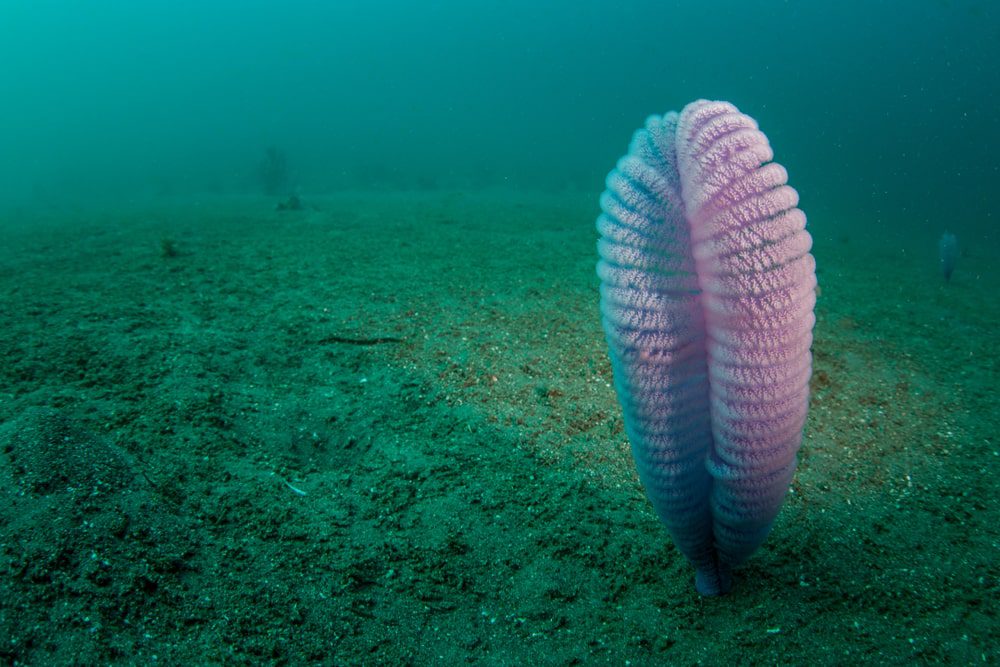Scientists discovered millions of animal species surviving on Terra, some of which are fierce, while others are extremely cute, loving, and adorable. Out of all the species, we are only aware of a small percentage.
But from those that we do know, there are some very strange animals that are truly incredible. They have all kinds of unusual features and behaviors that could easily earn their place on many people’s animal-spotting bucket lists. Here are some of the weirdest animal species you will ever hear about:

Glass frogs
Glass frog species belong to the family Centrolenidae. These frogs are commonly known by the name “see-through,” thanks to their translucent skin. There are 60 different species of glass frogs seen in southern Mexico, Central America, and South America.
Their favorite habitat is the tropical rainforest, especially on treetops. These frogs have tini-tiny bodies that are bright green or olive green, and their belly is covered with translucent skin. Depending on the individual species, the size of a glass frog could differ.
But the smaller species are generally 0.78 inches long, while the larger ones could easily reach a length of 3 inches. You can also spot these tree-dwelling frogs in Costa Rica or even Panama.
Lyrebirds
The lyre is a tree-dwelling bird species that is native to Australia. There are two separate species of lyrebirds, known as superb lyrebirds or Albert’s lyrebirds. Both species are very different from one another, but the majestic lyrebird exhibits short legs and striped tail feathers that curl outwards at the end.
Their bodies are brown and gray, with a nice reddish hue in the wings. The Albert’s lyrebird lacks the long and elaborate tail of the Superb lyrebird. This species has brown and gray plumage with a slightly blue shade on the head and tail feathers.
These impressive birds are also known for their capacity to mimic sounds, including chainsaws, car alarms, camera shutters, ringtones, and sometimes even words.
MataMata
Matamata is a south American turtle famous for its shell, which can be either black or brown. The turtle also has a triangular and flattened head, and their bodies and long necks are all rough and bumpy.
You can easily find matamata in South America, where they live in slow-moving blackwater streams, rivers, marshes, and even swamps. They rarely live in shallow water, and they only come to land when it’s time to lay eggs.
Sugar gliders
The sugar glider is a small and nocturnal possum that glides using its skin and legs as “wings,” just like a flying squirrel. These omnivores belong to the marsupial infraclass, and they get their common name from their increased appetite for sugary foods, like sap or nectar.
Red-lipped batfish
Commonly known as the weird-looking fish, the red-lipped batfish lives in the marine life of the Galapagos Islands. These fish are said to possess very similar features to a bat, so that’s why they’re called batfish.
Even if these species’ bodies differ from light brown to grey, they can also be easily identified by their distinctive red lips. Another remarkable fact about red-lipped batfish is that they can walk on ocean floors, mostly because they’re not good swimmers. You might find red-lipped batfish in the Pacific Ocean.
Pink fairy armadillo
The pink fairy armadillo is one of the smallest species of armadillo. It’s also the only armadillo that has a dorsal shell that’s completely separate from its body. The species is also known for some of its unique features, like the pink fairy armadillo, which pumps blood using its shell in order to regulate its body temperature.
They’re also known for their sand-swimming abilities because they’re great at navigating underground. You can visit Argentina, where you can find the pink fairy armadillo in the dry grasslands and sandy plains.
Markhor
Markhor is a wild goat that can be found in the mountains of Central Asia, from southern Russia all the way to the west of the Himalayas. But you can still find a significant population of these animals in Pakistan, Afghanistan, Uzbekistan, and Turkmenistan.
The males and females look very similar in appearance; they both have spiral-shaped horns that can be flared or straight, depending on the individual. They also have tan-colored coats and white underpants, with rugged white fur on their chest and neck.
Even if Markhor goats would rather live at altitudes, the heights of their ranges mainly depend on the season. During summers, they live at higher altitudes, while in winters, they live at lower ones.

Leafy sea-dragon
The leafy sea dragon and the weedy sea dragon are both close to seahorses. In fact, they are probably some of the most ornately camouflaged creatures. Did you know that they are Sir David Attenborough’s favorite species?
The lobes of their skin offer them the perfect camouflage, which resembles seaweed. The leafy sea dragons can easily maintain a similar illusion while swimming. You can easily find this eye-catching creature along the southern and western coasts of Australia.
Sea pen
A seapen is an incredibly graceful creature of the seafloor, named after an old-fashioned quill pen. Their colors range from dark orange to yellow to white. Generally, sea pens can grow to a height of 40 cm. What’s really interesting is that these sea creatures are a colony of polyps that work very well together to survive.
When they’re stimulated, the sea pens glow with a bright greenish light. You can check out these sea pens in the Pacific Ocean, where they thrive from the Gulf of Alaska to California.
Coatimundi
Coatimundis are related to both raccoons and kinkajous. There are no less than four species of animals, but all the coatis types have a slender head with a very long, elongated nose, turned slightly upward. They also have small ears, dark feet, and a very long tail, which is mainly used for balancing.
What’s very interesting about these species is that they are wildly flexible; they can rotate up to 60 degrees in any given direction. You can find these weird animals in the Americas.
Aardwolf
Oh, don’t let the name fool you. Aardwolves are neither related to wolves nor aardvark. In fact, their name means “earth wolf” in Afrikaans, which is a reference to their voracious appetite for insects. They’re native to east and southern Africa, and they’re most closely related to hyenas.
With that being said, you’re more likely to find them tearing into a termite mound rather than a carcass abandoned by a lion. They can eat as much as 200,000 termites in a sitting, imbuing them with moisture and protein. This allows them to live in some of the driest corners of the planet.
Chinese water deer
Native to the Yangtze flood plain and some parts of Korea, the Chinese water deer is much more related to a musk deer than a true deer. The males don’t have any antlers. Instead, they grow rather long tusk-like canines, which gives the breed the fearful nickname of “vampire deer.”
However, don’t worry. If you ever stumble upon them in the wild, it doesn’t mean that they will harm you. The tusks are rather ornamental and are used to root around for food. They’re not after your blood whatsoever. They would rather chew on weeds, grasses, and herbs.
But the list goes on. If you’re interested in this subject, then you definitely need to try “Strange Animals” by Tom Jackson!
If you found this article interesting, we also recommend reading: Angry Dog: 7 Signs Your Pup Doesn’t Feel Good












